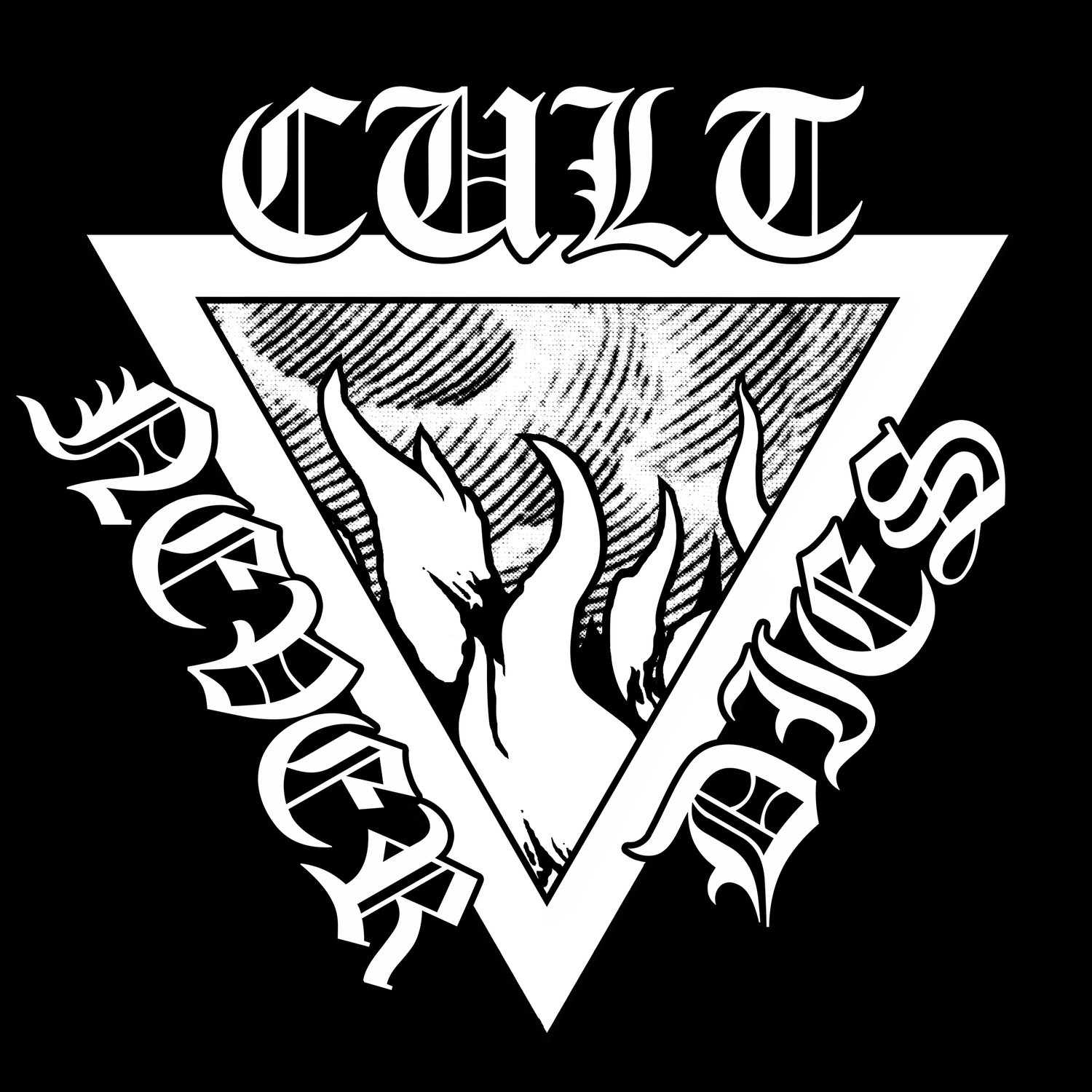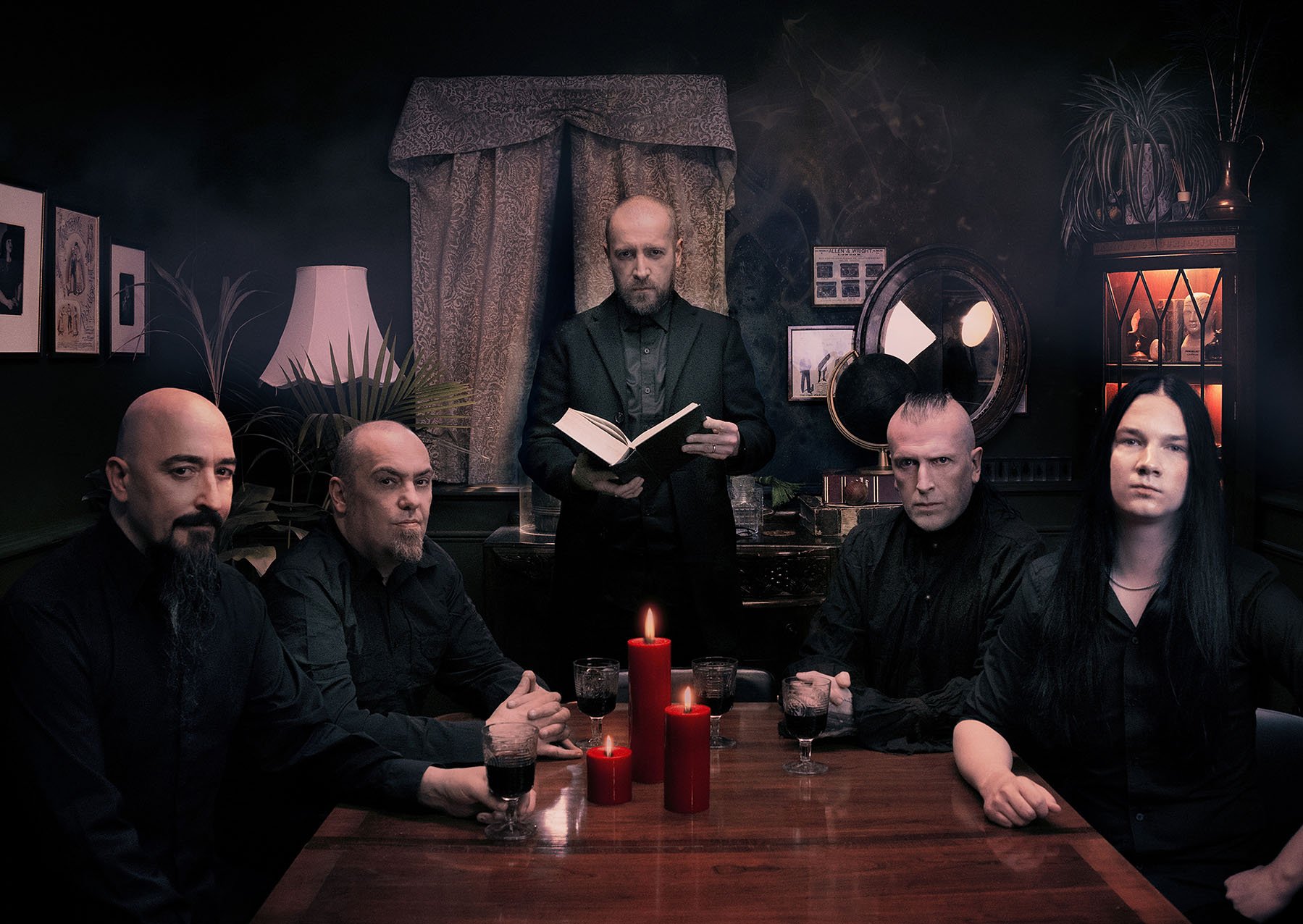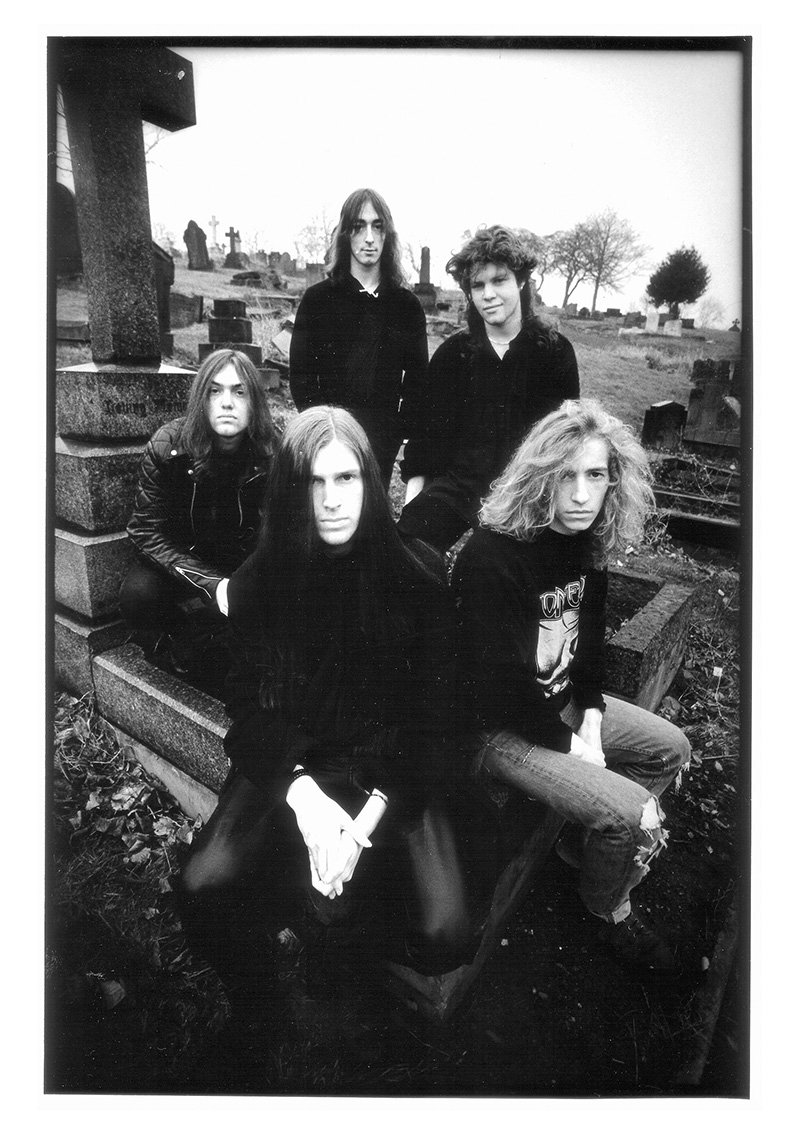Short excerpt of the interview with Gregor Mackintosh of PARADISE LOST, taken from the book DOOM METAL LEXICANUM II, by Aleksey Evdokimov.
One of the things I wanted to start talking to you about was the change of style that happened quite early in Paradise Lost’s career, from the more death metal-oriented Lost Paradise to the more gothic and doomy overtones of Gothic and onto Shades Of God, where those elements developed and matured. I wondered how did that happen so swiftly, that evolution from record to record?
“I think it’s because I get bored very easily. I think it’s probably that simple - I mean on the first record we were really into the early parts of death metal and grindcore, but our drummer couldn’t play fast. So there was a bit of that in there, and also we liked some really, really slow stuff, like Dead Can Dance, as well. So ‘Dead Can Dance meets metal’ was a lot of the first three records really. On the second record things got a bit more gothic because The Sisters Of Mercy started coming in, and 4AD type of stuff, but Shades Of God was the album where I really went to town on worshipping Trouble and Sabbath and stuff like that, so that’s where that kind of went. Yeah, it was just getting bored on every album, like, ‘Okay, we’ve done that, now let’s try something else’.
How would you place your first album? When you were making it did you see it as part of the doom genre, or was it just sort of slower-than-usual death metal for you?
“A bit of both, because I’ve always kind of liked both. I think a lot of people say, ‘Well, this was the first death-doom band’, but I personally think it was something like Dream Death. I hadn’t really heard a mixture of doom and death similar to that before they came along. I mean, it wasn’t very death metally but it spurred us on to do that kind of thing. Everyone at the time was just kind of finding their own style – it’s the opposite of today, people want to be someone else’s style, or part of a gang – but back then it was just like, ‘We have to sound like ourselves, regardless of whether anyone likes it or not’, you know?”
Originality, I think, was more key then…
“You respected other bands, but you didn’t want to sound like anyone else. I remember when Carcass first formed, the idea was to be a bit more like a grindcore Macabre. They wanted to be like the band Macabre, but they didn’t want to sound like them, and it was a similar thing with us. Like, we liked the band Massacre, but we also liked Candlemass and stuff, so it’s kind of like blending those styles to get something that’s a little bit different.”
Your first demo and the very early works, are kind of more clearly identifiable as classic death metal of that era.
“Yeah, the first demo was. That was when we were just finding our footing. I think the second demo really is a better representation of the band than the first album is,. Because we really just wanted to make the first album like the second demo, but [Peaceville Records owner] Hammy got involved as producer – as it was then – and kind of made it a little bit too clean-sounding for our liking. ‘Cause the demo is more atmospheric than the album, I guess you could say.”
Yeah, it’s a bit more archaic-sounding...
“Yeah, that’s what we wanted to do - but, I mean, that happened to lots of bands around that time on Earache and Peaceville, where their own ideas were getting usurped into [something else]. Because when budgets get bigger, and you’ve got more time to make things, sometimes it’s not a good thing: sometimes it loses its rawness.”
So would you say there were a lot of doom influences on those first three records, or was it the fact you were mixing influences from bands like The Sisters Of Mercy and other goth and death rock with death metal that made it sound kind of doomy? Because there’s a sort of a blurred line isn’t there, between Paradise Lost as a doom metal band and as a gothic heavy metal band?
“Yeah, but there was definitely a lot of doom influences in there as well. I mean, even on the B-side of the As I Die single which was from Shades Of God, there’s an Atomic Rooster cover, which was like a seminal doom band. So, yeah, we loved early Candlemass, St. Vitus, Trouble’s first two or three records were a big influence – I mean, yeah, there was lots of stuff that we were into that came into the sound as well as Massacre and the first Death album and some of the early grindcore bands – as well as Frost and Hellhammer and stuff like that – so we were just putting all that together. We liked all that stuff but we didn’t want to be one of those styles in particular.”
I think one of the reasons that Paradise Lost is loved by different generations of fans is that you’ve always been very distinctive and had your own voice. But there was a time when you were obviously more closely linked to Anathema and My Dying Bride because there seemed to be a new subgenre, this doom-death explosion. Were you comfortable with that kind of grouping?
“Well, it’s funny because that only happened after the fact. It wasn’t around at the time. It’s similar to people remembering why Carcass or At The Gates decided to take hiatuses or split up or whatever – people say it’s because they wanted to, but it isn’t: it’s because no-one was interested, you know? People remember it differently after a certain amount of time. It’s the same with that early ‘Peaceville Three’ thing, the death-doom thing. We’d already left Peaceville and had done the Icon album before either of those two bands even really got off the ground.”
“So we weren’t aware of it, it wasn’t until years and years later that someone said ‘Oh, this Peaceville Three thing…’ and the death-doom scene, because there wasn’t... when we were there, there wasn’t a scene. We were doing gigs with bands like Napalm Death, Extreme Noise Terror, Bolt Thrower, you know – it was more in the leftovers of the punk scene and the early grindcore scene. We were having to do gigs with those bands because there was nobody else around doing slow stuff in the sort of death metally style. So every gig we did we just got loads of people shouting at us to play faster!”
Ah, so that old cliché was real! [Both laugh]
“Yeah, I mean it’s fine, we love Anathema and My Dying Bride, they’re good friends of ours, but it really isn’t how people remember it - there was a lot of years in-between you know?”
Your third album, 1992’s Shades Of God, came out the same year as the first My Dying Bride full-length – were you aware of them and Anathema, as they came onto the scene? Obviously they appeared a bit later, but did you see some kind of shared vision within their work?
“More so with Anathema I would have said, at first, because I was aware of them before My Dying Bride, because for our Gothic album we did a few shows around Europe and one of them was in Liverpool. And Anathema – I think it was one of their first gigs – they supported us, and they did a cover of ‘Eternal’ from Gothic in their set, which we were playing in our set and we just thought ‘Oh my god, why are they doing this?’ [laughs]. But that was the first time I’d been aware of another band doing that type of stuff from England, and My Dying Bride’s album came out, like you said, about the same time as Shades Of God, but we’d kind of moved on already, so it was more really Anathema and My Dying Bride together, and us not being aware of it anymore because we’d done it about three or four years before, but not in a scene or anything, just kind of on our own.”
“I mean the Gothic album nearly didn’t get released because no one really understood what it was I think. Me and Hammy from Peaceville had to go to the Rough Trade offices and talk them into releasing it because they just didn’t like it, they said ‘What the hell is it? It’s not really death metal, or doom metal, or gothic music – what is it?’ And we just said, “Look, it is what is’, you know? ‘Please release it’. So they did, and then slowly people started to like it.”
The evolution of Paradise Lost from Shades Of God to Icon seemed to be a lot smoother than that between previous releases. Did you feel with Shades Of God that you’d kind of found a comfortable sound?
“No, no - I mean Shades Of God is probably one my favourite records I’ve ever done, and it kind of falls between a rock and a hard place. I think Icon sounds like it should have come after Gothic, in a way. Shades Of God is kind of, I don’t know, it’s much more... it’s got these really long songs on, and lots of different parts to each song, it’s very riffy - I think it’s only the song ‘As I Die’ from the album that led us to make the Icon album. It was realising that we could write a song like that so successfully and still have it be heavy, if you know what I mean. I mean, I was the only one that liked ‘As I Die’ when we actually recorded it, because it was left off the first vinyl pressing of the record because no-one else liked it! And then some people at the record label, at Music For Nations, said, ‘Well, why is this left off here? You’ll do this as a single’, then it was added to every subsequent pressing as well…”
Interview continues in Doom Metal Lexicanum II, released in 2020.





